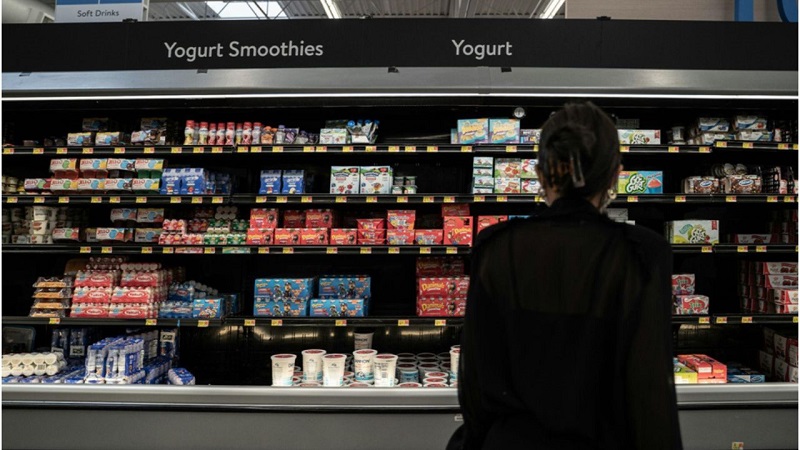Managing retail execution in the FMCG sector has always been a complex endeavor. The inefficiencies of traditional methods—such as manual audits, paper checklists, and sporadic store visits—often result in inaccuracies, missed sales opportunities, and operational bottlenecks. These outdated practices struggle to keep pace with the rapidly changing dynamic retail environment, where shelf conditions are constantly evolving, and consumer expectations are higher than ever.
The AI image recognition FMCG solutions help companies monitor shelf conditions in real time, ensuring optimal product placement and availability. This shift from manual to innovative processes enhances operational efficiency and drives significant improvements in sales and customer satisfaction.
The Shift from Manual to Smart: Understanding Image Recognition in FMCG
Image recognition for FMCG involves utilizing AI-powered systems to analyze images from retail stores, identify products, track stock levels, and ensure planogram compliance. These systems can detect out-of-stock items, misplaced products, and pricing errors, providing actionable insights to field teams and management.
Unlike manual audits, which are time-consuming and prone to human error, image recognition offers rapid, accurate, and consistent data collection. This technology, which provides real-time data, enables FMCG companies to make informed decisions quickly, respond to issues proactively, and maintain high standards of retail execution across all locations.
Quantifying the ROI: Cost Savings Achieved Through Image Recognition
Implementing image recognition technology leads to substantial cost savings for FMCG companies. By automating shelf audits, companies reduce the need for extensive field teams and minimize travel expenses. Additionally, accurate data collection reduces errors in inventory management, preventing overstocking or stockouts that can tie up capital or result in lost sales.
For instance, a case study by Infilect revealed that companies using their image recognition solutions experienced a 70% reduction in audit time per store and a 30% savings on trade marketing budgets. These efficiencies translate into significant financial benefits, improving the bottom line and allowing resources to be allocated more effectively.
Enhancing Accuracy: Improvements in Data Collection and Analysis
Accuracy in data collection is crucial for effective decision-making in the FMCG industry. Manual methods often result in inconsistent and unreliable data due to human error and subjective assessments. In contrast, image recognition technology provides precise, objective, real-time data on shelf conditions.
Image recognition is over 95% accurate in identifying products and shelf arrangements, ensuring that companies have a clear and accurate view of their retail execution. This level of precision enables better forecasting, inventory management, and promotional planning, leading to more efficient operations and increased sales.
Driving Sales: How Image Recognition Contributes to Revenue Growth
Effective shelf management has a direct impact on sales performance. Products out of stock or improperly displayed can lead to missed sales opportunities and diminished customer satisfaction. By utilizing image recognition technology, companies can ensure that products are consistently available and correctly positioned, thereby enhancing the shopping experience and encouraging customers to make purchases.
According to a report by the Retail Owners Institute, well-executed planograms can increase sales by up to 20%. Image recognition facilitates adherence to these planograms, ensuring that shelves are organized optimally and promotions are executed as planned. This proactive approach to shelf management not only drives revenue growth but also instills a sense of optimism about the potential for growth, thereby strengthening brand presence in the market.

Real-World Success Stories: Case Studies of Early Adopters
Several FMCG companies have successfully implemented image recognition technology, reaping significant benefits. For example, a global beverage company adopted an image recognition solution to monitor shelf compliance across thousands of retail outlets. As a result, they achieved a 25% improvement in planogram compliance and a 15% increase in sales within six months.
Another case involves a leading personal care brand that used image recognition to track promotional displays. The technology enabled them to swiftly identify and rectify non-compliant stores, resulting in a 20% increase in promotional effectiveness and a notable rise in market share.
Key Benefits of Adopting Image Recognition in FMCG
- Real-time shelf monitoring and analytics
- Improved planogram compliance
- Enhanced stock availability and reduced out-of-stock
- Streamlined promotional execution
- Reduced labor costs and manual errors
- Faster decision-making with accurate data
Implementation Considerations: Steps to Integrate Image Recognition Successfully
FMCG companies should consider several key factors to successfully integrate image recognition technology. First, it is crucial to select a reliable and experienced technology partner. The chosen solution should also be scalable, user-friendly, and compatible with existing systems.
Training field teams to use the technology effectively ensures smooth adoption and maximizes benefits. Additionally, establishing clear objectives and KPIs helps measure the impact of the implementation. Regular reviews and updates to the system will ensure its continued effectiveness and adaptability to evolving business needs.
Conclusion
The transition from manual processes to innovative, AI-driven solutions marks a significant advancement in the FMCG industry. By adopting image recognition for FMCG, companies can achieve substantial cost savings, enhance data accuracy, and drive sales growth. Real-world success stories underscore the transformative potential of this technology. As the retail landscape continues to evolve, embracing image recognition positions FMCG companies to stay competitive and meet the demands of modern consumers.










Leave a Reply